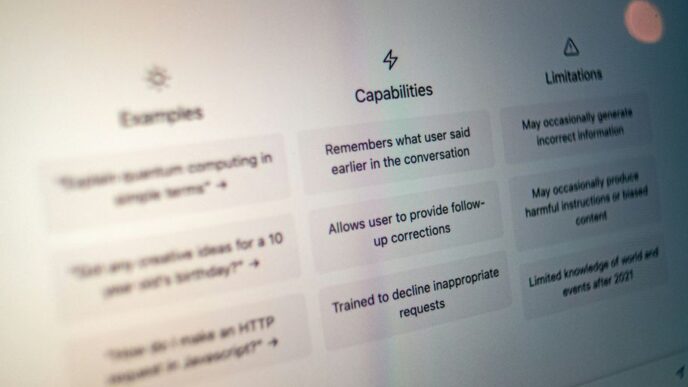In today’s fast-paced world, companies are rapidly changing how they operate to keep up with digital advancements. This transition, known as digital transformation, involves integrating technology into all aspects of a business. From improving customer experiences to enhancing operational efficiency, businesses are adopting new strategies to thrive in a digital-first environment. This article will discuss various digital transformation strategies and how organizations are adapting to meet the challenges of the modern marketplace.
Key Takeaways
- Digital transformation is essential for business survival in today’s tech-driven world.
- Companies must embrace new technologies like AI and cloud computing to improve operations.
- A strong leadership team is crucial for guiding digital transformation efforts.
- Cultural change within organizations is necessary to support digital initiatives.
- Measuring success through clear metrics helps organizations adapt and grow.
The Digital Transformation Landscape
Digital transformation is changing how businesses operate across many sectors. Companies must adapt to stay relevant in a world that is increasingly digital. This transformation affects industries like retail, healthcare, and finance, reshaping traditional business models.
Impact on Various Industries
- Retail: Online shopping has become essential, with businesses needing to provide seamless experiences.
- Healthcare: Telemedicine and digital records are now standard, improving patient care.
- Finance: Digital banking and fintech solutions are changing how people manage their money.
Key Technologies Involved
The shift is driven by several key technologies:
- Artificial Intelligence (AI): Helps in understanding customer behavior and improving services.
- Cloud Computing: Offers flexibility and access to data from anywhere.
- Internet of Things (IoT): Connects devices to gather data and enhance operations.
Consumer Expectations and Business Responses
Today’s consumers expect:
- Personalized experiences tailored to their needs.
- Instant access to products and services.
- Convenient interactions across multiple channels.
In response, businesses are adopting more agile and customer-focused strategies. They are not just digitizing operations but also rethinking how they engage with customers to meet their expectations.
Adapting to a digital-first world is not just an option; it’s a necessity for survival. Companies that embrace these changes will thrive in the new landscape.
By leveraging technology effectively, organizations can enhance their operations and provide better customer experiences, ensuring they remain competitive in this digital age.
The Digital Transformation Process
Implementing digital transformation is a big change for any business. It involves updating how a company works, its culture, and how it interacts with customers. Here’s a simple breakdown of the steps involved:
Setting Goals and Establishing a Baseline
- Identify your goals: What do you want to achieve? This could be improving customer experience, increasing efficiency, or entering new markets.
- Assess your current state: Look at your existing operations and technology. Understand where you are now and where you want to be.
- Create a leadership team: Form a team that includes members from different departments like IT, marketing, and customer service. This team will guide the transformation.
Building a Strong Leadership Team
- Diverse Representation: Ensure your leadership team includes people from various departments.
- Shared Vision: Everyone should understand and support the goals of the transformation.
- Regular Meetings: Hold frequent discussions to keep everyone aligned and informed.
Creating a Detailed Roadmap
- Outline Key Projects: Identify major projects that will help achieve your goals.
- Set Milestones: Break down the process into smaller, manageable steps.
- Allocate Resources: Determine what technology and tools you will need to succeed.
Remember: Digital transformation is not just about technology; it’s about changing how your business operates and interacts with customers.
By following these steps, companies can effectively navigate their digital transformation journey and adapt to a digital-first world. The key is to stay focused on the customer experience and be willing to adjust as needed.
Key Technologies Driving Digital Transformation
Digital transformation is heavily influenced by several key technologies that enable businesses to adapt and thrive in a digital-first world.
Cloud Computing
Cloud computing provides flexibility and scalability, allowing companies to access data from anywhere. This technology supports remote work and ensures secure data storage. Here are some benefits of cloud computing:
- Scalability: Easily adjust resources based on demand.
- Accessibility: Access data from any location.
- Cost-Effectiveness: Reduce the need for physical infrastructure.
Artificial Intelligence and Machine Learning
AI and machine learning are revolutionizing customer service and operational efficiency. They help businesses personalize experiences and make informed decisions. Key applications include:
- Personalized Recommendations: Retailers use AI to suggest products based on customer behavior.
- Predictive Maintenance: Manufacturers utilize ML to foresee equipment failures.
- Enhanced Decision-Making: AI aids in analyzing data for better business strategies.
Internet of Things and Blockchain
The Internet of Things (IoT) connects devices to gather and share data, improving industries like agriculture. For example, IoT sensors can monitor soil conditions to optimize watering. Blockchain technology ensures secure transactions and product traceability. Here’s how they contribute:
- IoT: Increases efficiency in supply chains and inventory management.
- Blockchain: Provides transparency and security in transactions.
These technologies empower organizations to innovate, enhance efficiency, and deliver superior customer experiences. Embracing them is essential for staying competitive in today’s market.
In summary, the integration of these technologies is crucial for businesses aiming to succeed in a digital-first environment. They not only streamline operations but also enhance customer engagement, making them indispensable in the digital transformation journey.
Cultural and Organizational Change for Digital Transformation
Importance of Agile Culture
A successful digital transformation needs a flexible and open culture. Companies should encourage:
- Experimentation and innovation
- Risk-taking without fear of failure
- Collaboration across departments
Leadership and Vision
Strong leadership is crucial. Leaders must:
- Set a clear vision for the future.
- Model the behaviors they want to see.
- Support their teams through the change.
Change Management Strategies
To manage change effectively, organizations should:
- Communicate openly about the transformation process.
- Provide training and resources to help employees adapt.
- Recognize and reward those who embrace the new culture.
A culture that embraces change can lead to greater success in digital transformation.
In summary, cultural change is essential for companies to thrive in a digital-first world. By fostering an agile environment, providing strong leadership, and implementing effective change management strategies, organizations can navigate the challenges of digital transformation successfully.
| Key Elements | Description |
|---|---|
| Agile Culture | Encourages innovation and risk-taking |
| Strong Leadership | Guides teams through change |
| Effective Communication | Keeps everyone informed and engaged |
Impact of COVID-19 on Digital Transformation
The COVID-19 pandemic has significantly changed how businesses approach digital transformation. Companies had to adapt quickly to survive, leading to a rapid shift in their digital strategies.
Acceleration of Digital Initiatives
- Many organizations sped up their digital projects to meet immediate needs.
- 77% of CEOs reported that the pandemic hastened their digital transformation efforts.
- Remote work became the norm, pushing companies to enhance their digital tools and platforms.
Remote Work and Virtual Collaboration
- The percentage of full-time remote workers jumped from less than 4% to over 50% in just weeks.
- Businesses adopted new technologies for collaboration, such as video conferencing and project management tools.
- This shift has made employee experience with digital tools a top priority, changing it from a luxury to a necessity.
Adapting to New Consumer Behaviors
- Consumer expectations have shifted dramatically, with a greater demand for online services.
- Businesses that were already digitally advanced adapted more easily, while others struggled to keep up.
- Companies are now focusing on improving customer experience through personalization and data analytics.
The pandemic has forced organizations to rethink their digital strategies, making them more agile and responsive to change.
In summary, the impact of COVID-19 on digital transformation has been profound, pushing companies to innovate and adapt in ways they never anticipated. The focus on digital dexterity is now more critical than ever, as businesses strive to meet evolving consumer needs and expectations.
Assessing Organizational Digital Dexterity
Evaluating Current Capabilities
To understand how well your organization is adapting to digital changes, start by evaluating your current capabilities. This includes:
- Identifying existing digital tools and how effectively they are used.
- Assessing employee skills in using these tools.
- Understanding how well teams collaborate in a digital environment.
Identifying Gaps and Opportunities
Next, look for gaps in your digital strategy. Consider:
- Areas where technology is lacking or underutilized.
- Skills that employees need to develop further.
- Processes that could be improved with digital solutions.
Developing Digital Skills and Mindsets
Finally, focus on building a digital mindset across your organization. This can be achieved by:
- Offering training programs to enhance digital skills.
- Encouraging a culture of openness to change and innovation.
- Promoting collaboration and inclusion in digital projects.
In a digital-first world, organizations must adapt quickly to stay competitive. Companies that embrace change and invest in their employees’ digital skills will thrive in the long run.
By assessing these areas, organizations can better position themselves for successful digital transformation and ensure they are ready for future challenges. Diverse perspectives within teams can lead to innovative solutions and improved performance.
Enhancing Customer Experience Through Digital Transformation

In today’s digital world, improving customer experience is essential for businesses. Companies are using digital tools to make interactions smoother and more enjoyable for their customers. Here are some key areas where digital transformation is making a difference:
Personalization and Data Analytics
- Businesses are using data to understand what customers want.
- Personalized recommendations can lead to better sales.
- Analyzing customer behavior helps in creating targeted marketing strategies.
Omnichannel Strategies
- Customers expect a seamless experience across all platforms.
- Companies are integrating online and offline channels to meet these expectations.
- This approach ensures that customers can interact with the brand in their preferred way.
Improving Customer Support
- Digital tools like chatbots are enhancing customer service.
- Quick responses to inquiries improve customer satisfaction.
- Companies are investing in training staff to handle complex issues effectively.
Digital transformation is not just about technology; it’s about creating a better experience for customers.
By focusing on these areas, businesses can adapt to the changing landscape and meet the demands of their customers effectively. For instance, vesture leather is launching soon, emphasizing the importance of gradual brand recognition through various media. Visitors can subscribe to a newsletter for updates, ensuring they stay informed about new offerings. This approach highlights how companies can leverage digital tools to enhance customer engagement and satisfaction.
Operational Improvements Through Digital Transformation
In today’s fast-paced world, businesses are turning to digital transformation to enhance their operations. This shift is crucial for staying competitive. Here are some key areas where digital transformation can lead to significant improvements:
Data Accessibility and Decision-Making
- Real-time data access: Employees can access information anytime, anywhere, leading to quicker decisions.
- Data-driven insights: Companies can analyze data to understand trends and make informed choices.
- Collaboration tools: Enhanced communication platforms allow teams to work together more effectively.
Automation and Efficiency
- Streamlined processes: Automating repetitive tasks saves time and reduces errors.
- Resource optimization: Businesses can allocate resources more effectively, cutting costs and improving productivity.
- Faster service delivery: Automation helps in providing quicker responses to customer inquiries.
Enhanced Security Measures
- Improved data protection: Digital tools help safeguard sensitive information against breaches.
- Regular updates: Automated systems ensure that security protocols are always up to date.
- Compliance tracking: Digital solutions can help monitor compliance with regulations, reducing legal risks.
Digital transformation is not just about technology; it’s about creating a culture that embraces change and innovation.
By focusing on these areas, companies can not only improve their operations but also enhance their overall performance in a digital-first world.
| Improvement Area | Benefits |
|---|---|
| Data Accessibility | Faster decision-making |
| Automation | Increased efficiency |
| Enhanced Security | Better protection of sensitive data |
Developing a Digital Transformation Framework

Creating a digital transformation framework is essential for businesses aiming to thrive in a digital-first world. This framework helps organizations navigate their digital journey effectively. Here are some key elements to consider:
Common Themes and Elements
- Customer Experience: Focus on enhancing how customers interact with your brand.
- Operational Agility: Ensure your processes can adapt quickly to changes.
- Culture and Leadership: Foster a culture that embraces change and innovation.
- Workforce Enablement: Equip employees with the skills they need to succeed.
- Digital Technology Integration: Seamlessly incorporate new technologies into existing systems.
Examples of Frameworks
Several frameworks can guide your digital transformation:
- MIT Sloan: The New Elements of Digital Transformation
- Cognizant: How to Win with Digital: A Playbook for Successful Digital Transformation
- Prophet: Six Stages of Digital Transformation
- Ionology: A Step-By-Step Guide to Digital Transformation
Steps to Create Your Own Framework
To develop your own digital transformation framework, follow these steps:
- Set Clear Goals: Identify what you want to achieve with your transformation.
- Assess Current State: Understand where your organization stands today.
- Build a Leadership Team: Form a team that represents all areas of your business.
- Create a Detailed Plan: Outline the steps, resources, and timelines needed for your transformation.
- Evaluate Progress: Regularly check your progress and adjust your strategy as needed.
Developing a digital transformation framework is not just about technology; it’s about creating a culture that supports innovation and change.
In summary, as the across oceans group enhances its consulting services by integrating digital transformation strategies with product consulting, it reflects a commitment to providing comprehensive solutions that address both technological and market demands. This approach is vital for businesses looking to succeed in a rapidly changing environment.
The Role of Leadership in Digital Transformation
In today’s fast-paced digital world, leadership plays a crucial role in guiding organizations through transformation. Leaders must not only embrace new technologies but also inspire their teams to adapt and innovate.
Championing Digital Technologies
- Leaders should actively promote the use of digital tools and platforms.
- They need to stay informed about the latest technological trends.
- Encouraging experimentation with new technologies can foster a culture of innovation.
Leading with Empathy and Purpose
- Understanding employee concerns during transitions is vital.
- Leaders should communicate openly about changes and their impacts.
- Building trust through transparency can help ease fears and resistance.
Embedding a Digital Mindset
- Leaders must model a digital-first approach in their decision-making.
- Training and development programs should focus on enhancing digital skills.
- Encouraging a mindset that embraces change can lead to greater adaptability.
Leadership is not just about making decisions; it’s about inspiring others to embrace change and work towards a common goal.
In summary, effective leadership is essential for successful digital transformation. By championing technology, leading with empathy, and embedding a digital mindset, leaders can guide their organizations to thrive in a digital-first world.
| Leadership Role | Key Actions | Impact |
|---|---|---|
| Championing Digital Technologies | Promote tech use, stay informed, encourage experimentation | Fosters innovation |
| Leading with Empathy and Purpose | Communicate openly, build trust | Eases resistance |
| Embedding a Digital Mindset | Model digital approach, enhance skills | Increases adaptability |
Measuring the Success of Digital Transformation
Setting Metrics and KPIs
To effectively measure the success of digital transformation, companies need to establish clear metrics and KPIs. Here are some key points to consider:
- Identify specific goals: Determine what you want to achieve, such as improving customer satisfaction or increasing efficiency.
- Use a mix of metrics: Combine quantitative data (like revenue growth) with qualitative insights (like customer feedback).
- Regularly review progress: Set up a schedule to check your metrics and adjust your strategies as needed.
Regularly Reviewing Progress
It’s important to keep track of how well your digital transformation is going. Here are some steps to follow:
- Collect data: Gather information on your KPIs regularly.
- Analyze results: Look for trends and patterns in the data.
- Make adjustments: If something isn’t working, be ready to change your approach.
Adjusting Strategies Based on Feedback
Feedback is crucial for success. Here’s how to use it effectively:
- Listen to customers: Pay attention to what your customers are saying about their experiences.
- Engage employees: Get input from your team on what’s working and what isn’t.
- Be flexible: Be willing to change your strategies based on the feedback you receive.
Measuring success is not just about numbers; it’s about understanding the impact of your digital initiatives on your overall business.
Summary Table of Key Metrics
| Metric | Description | Importance |
|---|---|---|
| Customer Satisfaction | Measures how happy customers are with your service | High |
| Revenue Growth | Tracks increase in sales over time | Very High |
| Operational Efficiency | Assesses how well resources are used | Medium |
Conclusion
In today’s world, ignoring digital change is not an option for businesses. Companies can now connect with customers all over the globe and sell their products online. With tools like advanced data analysis and artificial intelligence (AI), businesses can understand what their customers want better and create more personalized marketing. AI also helps make operations smoother, cuts costs, and enhances customer experiences, which leads to growth and new ideas. To succeed in this digital age, companies must embrace these chances while being careful about the risks. This article has looked at how businesses can successfully make this digital shift.
Frequently Asked Questions
What is digital transformation?
Digital transformation means using technology to change how a business works and serves customers. It’s about making everything more efficient and improving experiences.
Why is digital transformation important?
It’s crucial for businesses to adapt to new technologies and customer needs. Without it, companies risk falling behind competitors.
How has COVID-19 affected digital transformation?
The pandemic sped up digital changes. Many businesses had to quickly switch to online services and remote work to stay afloat.
What are key technologies in digital transformation?
Some important technologies include cloud computing, artificial intelligence, and the Internet of Things (IoT), which help businesses operate better.
How do companies start their digital transformation?
They begin by setting clear goals, assessing their current situation, and creating a detailed plan for change.
What role does company culture play in digital transformation?
A supportive culture that encourages innovation and flexibility is essential for successful digital transformation.
How can businesses measure the success of their digital transformation?
They can track progress using specific metrics and key performance indicators (KPIs) to see if they are meeting their goals.
What challenges do companies face during digital transformation?
Common challenges include resistance to change, lack of skills, and difficulties in integrating new technologies.











